Are you planning to visit Madrid for a weekend or a few days? You may wonder about the city’s top attractions, how to get around, general prices, and major gay spots. For up-to-date information about the city, we recommend reading The Guide to Gay Madrid.
Gay Madrid
Did you know that Madrid is Spain’s capital and largest city, covering an area of approximately 600 km²? It’s situated almost at the exact geometrical center of the country. The metropolitan area is the second-largest in the European Union (after Paris), with about 6.5 million people. Madrid is not only Spain’s political, economic, and cultural center but it’s also known for being one of the greenest cities in Europe. Despite having modern infrastructure, it has preserved the look and feel of its historic neighborhoods and streets. Most importantly, Madrid is famous for its legendary nightlife and party scene, so if you’re in the mood to let loose and have some fun, pack your bags and get ready for an unforgettable time!
Gay Rights in Spain
Spain is one of the most progressive countries globally regarding gay rights, although these dramatic changes have only occurred in recent decades. It was often selected as one of the Best European LGBT+-friendly destinations.
First of all, same-sex marriage is legal. The age of consent is 16 for everyone. Secondly, same-sex couples can adopt children. Thirdly, gay men can serve openly in the military. There are anti-discrimination laws for employment, provision of goods and services, and against hate speech.
That’s why the gay community is evident with major gay pride celebrations in Madrid and Barcelona.
For more information about gay life in Madrid, please read on.
Safety in Gay Madrid
Being lesbian or gay in Madrid is very secure. Since 1979, same-sex activity has been legal, and since 2005, same-sex couples have been allowed to get married. Plaza de Chueca is the district’s center and where everyone hangs out. Spain is a safe and welcoming destination for LGBTQIA+ travelers, especially in tourist hubs and big cities like Madrid, Barcelona, and Valencia. LGBTQIA+ travelers may encounter more conservative views in rural areas and small towns. Still, the risk of experiencing overt discrimination in Spain is generally low.
Gay Scene in Madrid
The leading gay area is in the Chueca district, near Gran Via. This trendy district has a high concentration of gay bars, clubs, and shops. This neighborhood is also relatively compact, with most establishments near Plaza Chueca or Calle Pelayo.
Most importantly, Chueca is an incredibly “open” area where you will likely see guys holding hands, occasionally kissing, and generally living a life you could only dream of in some other cities.
For your information: the nightlife starts very late in Madrid. The bars don’t get busy until midnight, and people move to a nightclub around 4 am. Many gay bars have dark rooms in the back. Hardcore venues with dress codes for cruising and fetish fans are also typical.
Every summer, Madrid hosts one of the most significant and vibrant Gay Pride events in Europe, attracting hundreds of thousands of spectators.
How to get to Madrid
Madrid is well-connected nationally and internationally by train, air, and road. It is the center of the Spanish railway network and has an excellent road network. The main international airport is just 13 km from the city center.
By plane
Whether low-cost or standard carriers, all flights fly into the main international airport in Madrid called Adolfo Suárez Madrid Barajas Airport, which is exceptionally well connected and close to the city center.
Traveling from the U.S.
Several airlines offer inexpensive and direct flights between the U.S. and Madrid, especially from New York City and Chicago’s O’Hare Airport. Direct flights cost approximately $500 in the off-season and $1,000 during peak season.
These are the primary carriers:
Traveling from Canada
Air Canada is the only airline offering nonstoptop flights between Toronto and Madrid. Other carriers, such as Iberia and British Airways, offer —or two-stoptop flights from Montreal or Toronto.
Traveling from Australia
Currently, no airlines fly directly from Australia to Spain’s capital. Still, leading airlines like Emirates, British Airways, and Qatar Airways offer several flights with just 1 or 2 stopovers.
Traveling from Europe
Several low-cost carriers fly to Madrid from different cities in the United Kingdom and the EU, usually from 2 to three hours. The prices are often more than just cheap. Please check the following links: the Skyscanner and Google flights should you like to find out more.
How to get to the center from the airport
By car
You can also get to Madrid by car from other parts of the peninsula or other European cities and towns. To plan your itinerary, we recommend Google Maps:
By train
Madrid’s two main railway stations are Chamartin and Atocha. Depending on where you come from, you will get to one or the other.
The AVE (Alta Velocidad Española) is a modern high-speed train in Spain that connects Madrid with Barcelona, Valencia, Seville, Cordoba, Alicante, Cuenca, Albacete, Villena, and Malaga, among other Spanish cities. AVE trains are punctual, comfortable, and have short travel times. Nevertheless, the tickets can be a little expensive. So, we recommend checking Avant and Alvia tickets or Altaria if you want something cheaper.
To see the schedules and rates, check out AVE’s official website:
Getting around Madrid
On foot
While not flat, walking is an excellent option for the city’s center. Many side streets are pedestrianized; some even have shade to control the intense summer heat. Make sure you take a cap.
By Metro and bus
Madrid’s public transport system is highly efficient, connects the city’s main interest points, and is relatively cheap compared to other European cities. You can use buses, Metro, taxis, or even electric bikes. Ultimately, you can purchase the city’s passes and save some money. For more info, click here.
When to visit Gay Madrid
If you plan a trip to Madrid, avoid summer (June to August), as the heat can be overwhelming. The best times to enjoy the city’s outdoor attractions are late spring and early summer. Fall (September to November) and spring (March to May) also provide pleasant temperatures that make the city come alive. Attention to winter: while you must bundle up against the cold, it offers significant hotel discounts. Remember that Madrid, at 657m (2155ft) above sea level, is Europe’s highest capital, and even in winter, temperatures can be chilly, comparable to northern Europe. Be prepared for icy winds from the Guadarrama mountains, and make the most of your visit!
Where to Stay in Madrid
Most gay travelers stay near the Chueca gay district, Gran Via, and Sol/Cortes. These central areas offer a great base from which to explore Madrid’s best sights and gay scenes. Some hotels are gay-owned and very gay-friendly.
For our list of recommended hotels in Madrid, visit Misterb&b or Booking or on The gay passport.
Things to do and to see in Madrid.
Madrid is a city like no other. Often overshadowed by its northern neighbor, Barcelona, the city has a cultural richness matched by very few destinations. A history of world-famous artists, renowned culinary experiences, and a solid relationship with the performing arts make Madrid one of the most exciting places on the planet. Sunsoaked and boasting stunning architecture, the city is an ideal year-round travel destination. The main attractions are the Prado Museum, Retiro Park, Royal Palace, Santiago Bernabéu Stadium (of course), and many others. Ultimately, please check our article about top Madrid attractions for more information about what to visit.
What and where to eat in Madrid?
Here, a dining establishment is practically on every corner. It’s no wonder why deciding where to eat in Madrid sometimes feels overwhelming!
So we’ve done the hard work for you and narrowed down the can’t-miss eateries in Spain’s thriving capital. You can eat at food markets, tapas bars, restaurants, cafes, bakeries, and pastry shops. If you’d like to learn more, please read our article about Must Try Spanish cuisine In Madrid.
Eating in Chueca
Famous for being the hub of Madrid’s LGBTQ+ community, Chueca is a vibrant, laid-back place where anyone feels welcome.
One of our all-time favorite places to eat in Madrid is Celso y Manolo. Here, classic Spanish dishes are given a slight contemporary touch while remaining true to their roots. They’re famous for their tomato dishes and trust us when we say they genuinely promote this humble nightshade to new heights.
For the enophiles, don’t miss Angelita, a cozy space just off of Gran Vía with a stellar selection of over 500 wines. This award-winning spot is run by two local brothers, who serve modern variations of their mother’s traditional Spanish recipes. The menu changes regularly to reflect the highest quality products available at any given time, so you know it will be good no matter what you get.
Gay-to-do list in Madrid
Madrid has a vibrant LGBT+ community. It’s a cosmopolitan city with much to discover. Here, you can live the good life while accessing all the cultural dynamism of a great global city.
Gay Bars and nightlife in Chueca
Madrid is renowned for its nightlife, and its gay venues are no different. It is one of Europe’s gayest capital cities, alongside Berlin and London. The center of gay nightlife in the town is Chueca. This lively and bustling neighborhood is popular among the city’s creatives and trendsetters because of its many art galleries and boutique clothing shops. The area has an edgy and quirky atmosphere, and it’s here that you’re likely to spot Madrid’s best-dressed residents.
Madrid has a diverse range of gay nightlife venues, from traditional bars playing pop anthems to cruising clubs, and it is complete with darkrooms. Locals don’t tend to go out until past 10 p.m., and the more prominent clubs will only get busy after midnight.
Among the classic venues in this area, a few names have now practically become part of the city’s cultural heritage. Museo Chicote has been named the best bar in Europe several times, and it is legendary and genuinely historic. Having welcomed the great stars of Hollywood’s heyday, it now hosts the city’s top DJs and veterans of the world of art and Madrid’s popular culture.
Another classic name on the Chueca nightlife scene is Libertad 8 (located at No. 8, Calle Libertad), the birthplace of some of the most emblematic singer-songwriters on the Madrid night scene. Teatro Barceló TClub, the heir to the famous Pachá, is also legendary, despite the name change, as Sala Ocho y Medio is in the same building.
Alongside these established venues, numerous new bars, pubs, and clubs are opening to satisfy the desire for fun in all its forms. For further information, we suggest visiting Madrid’s official tourist website.
Gay Madrid Saunas
There are quite a few gay saunas in Madrid. And in winter, Madrid’s gay population tends to return to an excellent old sauna.
Sauna Paraiso is one of the oldest and most well-established, with all the usual facilities, including a heated underground pool, cinema, and dungeon. Sauna Principe caters to an older crowd and bears, while Sauna Center has limited small sauna facilities but over 100 private cabins. Sauna Adan is another popular option, mainly known for its South American rent boys—best avoided if you don’t want to pay.
Most of these saunas are modern, clean, and maintained well. While some will provide condoms and lube, this won’t be the case for all of them, so bring your own, just in case. What’s more, most are licensed and have bars inside, some of which are pretty good bars in their own right. Saunas charge between €10 and €15 for entry but may include a free drink at the bar.
Gay-Friendly Madrid Tours

Toledo and Segovia Tour with Alcazar Entrance from Madrid

Historical Madrid Tour in Private Electric Tuk Tuk

Madrid: Live Flamenco Show with Food and Drinks Options
Madrid Travel Advice
I.D. visa or passport to visit Spain? Discover the documentation you’ll need depending on your nationality. Depending on your race, these are the necessary documents you will need to travel to Spain and Madrid:
U.S. Citizens
American citizens traveling to Spain for less than 90 days do not need a visa. However, they will need a valid passport for at least six months beyond their stay. Immigration officers may also ask citizens to show enough funds for their visit and a return airline ticket.
E.U., EEA, and Swiss Citizens
You do not need a visa to enter the country if you are a European Union or European Economic Area citizen.
Ultimately, we recommend visiting your country’s Spanish Embassy or checking the Spanish Ministry of Foreign Affairs and Cooperation’s website for more information: Ministerio de asuntos exteriores y de cooperación.
Note: For more tips on traveling, we recommend visiting Our Gay Travel resources page.
Money
The currency in Spain is the Euro. Cash dispensers are widely available. Credit and debit cards are generally accepted. However, some shops may require a photo ID if paying by card.
Electricity
They utilize two hundred twenty volts, using standard European 2-round pin plugs.

The welcoming personnel is waiting for you in Lakama bar.
The conclusion of The Guide to Gay Madrid
Everything is changing so fast in these turbulent times. If we missed something, please let us know in the comments below.
Take a look at

Gay Vienna
Gay Vienna is an old city that embraces the new! You find the opera on one side of the street;

Fascinating quotes about Madrid
Suppose you are looking for some Fascinating quotes about Madrid. In that case, you have them in this top list

Top Madrid attractions you need to see
Are you planning to visit Madrid, Spain, for a weekend or a few days? Do you probably wonder what the
Photo credits:
Featured photo: ©Javitouh

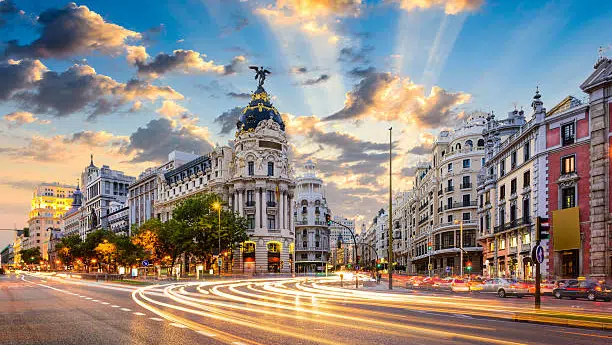
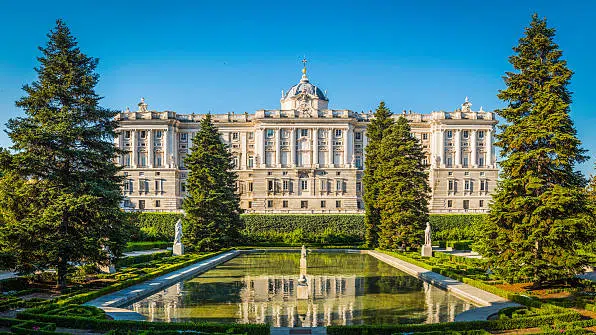




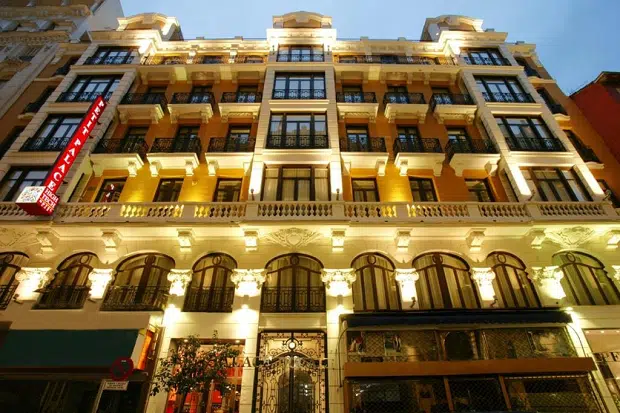
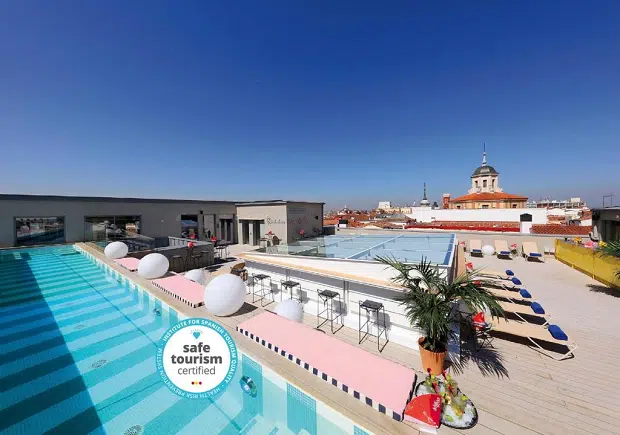


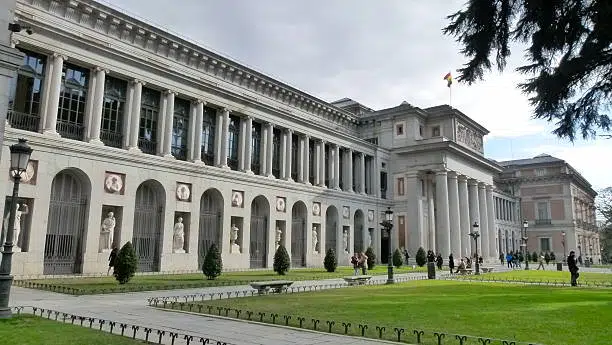



Comments are closed.